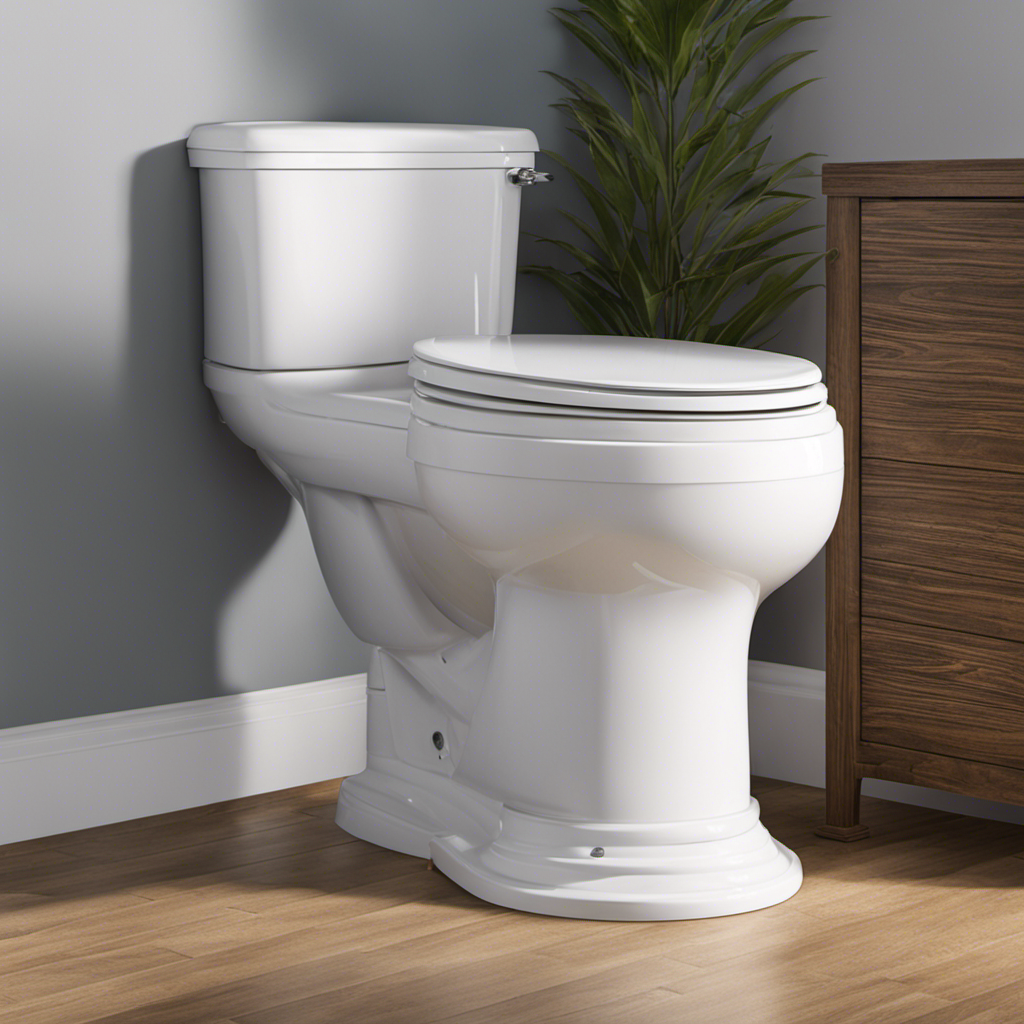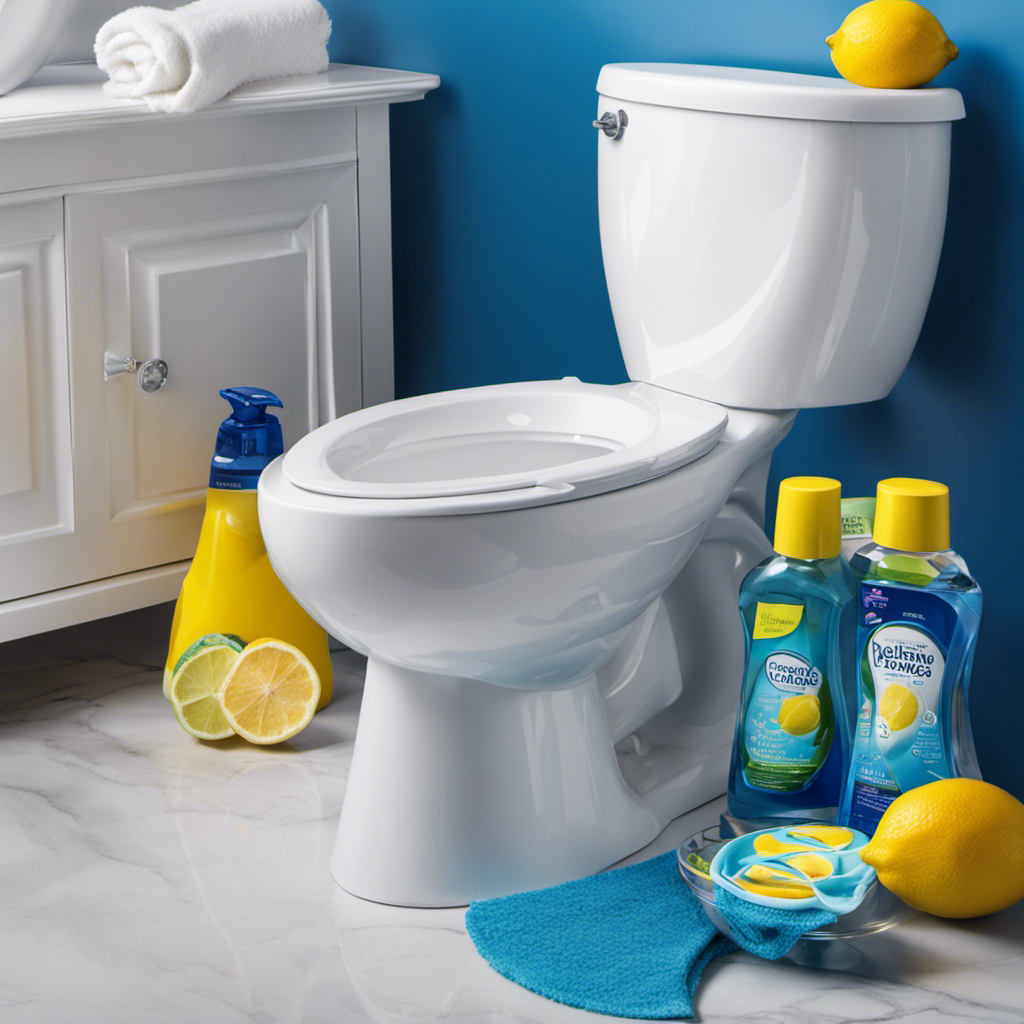So, you’ve noticed that the water level in your toilet tank is a bit on the low side, huh? Well, fear not, my friend, because I’ve got just the solution for you!
In this article, I’m going to show you exactly how to raise the water level in your toilet tank.
We’ll dive into understanding the factors affecting the water level, adjusting the fill valve, and checking and adjusting the float ball or cup.
Get ready to become a toilet tank water level expert!
Key Takeaways
- Water level in the toilet tank is important for proper functioning and water conservation.
- Factors affecting water level include insufficient water supply, fill valve adjustment, float valve position, and worn or damaged flapper seal.
- To raise the water level, adjust the fill valve by turning the adjustment screw and make small adjustments while testing the water level.
- Check and adjust the float ball or cup by tightening or loosening the adjustment screw, clean the float mechanism, and test the flush valve to ensure proper functioning.
Understanding the Water Level in Your Toilet Tank
Understanding the water level in your toilet tank is crucial for maintaining proper functioning. It not only ensures efficient flushing but also helps in conserving water resources. Measuring water efficiency is an important step in this process.
To do this, you need to check the water level in your toilet tank. Start by removing the tank lid and placing it on a flat surface. Look inside the tank and locate the water line. It should be marked on the inside of the tank or indicated by a fill line.
If the water level is too low, it may result in weak flushes and waste more water. On the other hand, if the water level is too high, it may lead to overflowing and potential water waste.
Identifying the Factors Affecting Water Level in the Toilet Tank
Identifying the factors that impact the water level in the toilet tank can help troubleshoot any potential issues. To maintain an optimal water level and ensure your toilet functions properly, it is important to consider the following factors affecting water pressure:
-
Water supply: Insufficient water supply can lead to low water pressure in the toilet tank. Check if the water shut-off valve is fully open and if there are any clogs or restrictions in the supply line.
-
Fill valve adjustment: The fill valve controls the water level in the tank. If it is not adjusted correctly, it may result in a low or high water level. Adjust the fill valve to the recommended level specified by the manufacturer.
-
Float valve position: The float valve controls the water flow into the tank. If it is positioned too low, it may cause a low water level. Ensure the float valve is properly adjusted and not obstructed by any debris.
-
Flapper seal: A worn or damaged flapper seal can cause water leakage, leading to a low water level. Inspect the flapper seal regularly and replace it if necessary.
-
Tank water level adjustment: Some toilets have an adjustable water level setting. If the water level is too low, adjust it according to the manufacturer’s instructions.
Maintaining the proper water level in the toilet tank is essential for its functionality and longevity. By understanding the factors that affect water pressure and the importance of water level in toilet maintenance, you can easily troubleshoot any issues and ensure your toilet operates efficiently.
Adjusting the Fill Valve to Raise the Water Level
To increase the amount of water in your toilet, you should adjust the fill valve accordingly. The fill valve is responsible for controlling the water level in the toilet tank. To adjust it, locate the float valve, which is usually a ball or cup device attached to a rod. Turn the adjustment screw on the valve to raise or lower the water level.
By turning it clockwise, you can increase the water level. It’s important to make small adjustments and test the water level after each adjustment.
Another option to raise the water level is by using water additives such as toilet tank tablets or dye tablets. These additives dissolve in water and help increase the water level. However, it’s crucial to follow the manufacturer’s instructions when using water additives to avoid any damage to the toilet system.
Checking and Adjusting the Float Ball or Cup to Increase Water Level
To increase the amount of water in your toilet, adjust the float ball or cup accordingly. This is an important step in maintaining the float mechanism and ensuring proper water level regulation in your toilet tank. Here are some techniques to help you with float mechanism maintenance and water level regulation:
- Inspect the float ball or cup for any damage or wear.
- Adjust the float ball or cup by tightening or loosening the adjustment screw.
- Clean the float mechanism to remove any debris or sediment.
- Check the water level in the tank and adjust the float ball or cup to achieve the desired level.
- Test the flush valve to ensure that it is working properly.
By following these steps, you can effectively increase the water level in your toilet tank. Now let’s move on to troubleshooting common issues with water level in the toilet tank.
Transitioning into the next section, let’s now address some common problems that may arise when trying to adjust the water level in your toilet tank.
Troubleshooting Common Issues With Water Level in Toilet Tank
Now let’s address some common problems you may encounter when trying to adjust the water level in your toilet tank.
One of the main issues is low water pressure. If you’re experiencing this, the first thing to check is the water supply valve. Make sure it’s fully open and not partially closed.
If the valve is fully open but you still have low water pressure, you may need to replace the faulty fill valve. This valve is responsible for regulating the water flow into the tank. To replace it, turn off the water supply, flush the toilet to drain the tank, disconnect the water supply line, and unscrew the old fill valve.
Install the new fill valve by following the manufacturer’s instructions. Finally, reconnect the water supply line, turn on the water, and adjust the water level as needed.
Conclusion
In conclusion, raising the water level in your toilet tank is a simple task that can be done by adjusting the fill valve or the float ball/cup. By understanding the factors affecting the water level and troubleshooting any common issues, you can ensure that your toilet is functioning properly.
Did you know that a running toilet can waste up to 200 gallons of water per day? Taking the time to raise the water level can not only save you money on your water bill, but also contribute to water conservation efforts.










